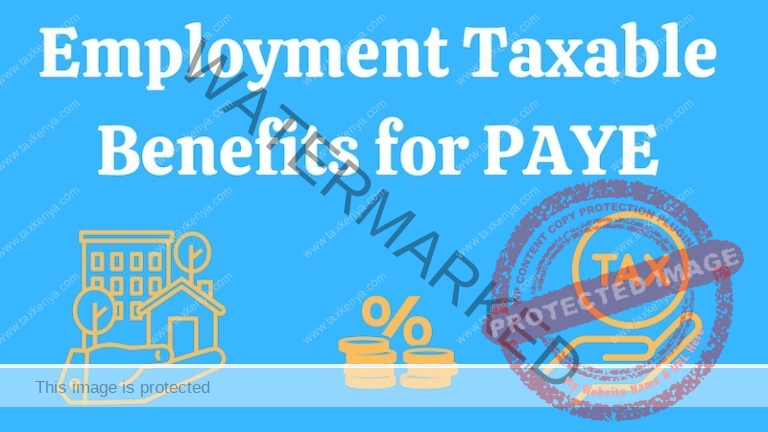Arror ‘dam’ and Kimwarer ‘dam’ and Itare ‘dam’ in Nakuru County are three famous terms in Kenya.
(Post continues after the photo)

(Photo by WAKA)
These three dam projects were being fronted by government parastatals specifically Kerio Valley Development Authority and Rift Valley Water Services Board. The construction of the dams was partly being funded by the Kenya government with taxpayers money.
[bha id=’https://www.bluehost.com/track/wakaguyu’ size=’190×60′ variation=’01’ align=’none’]
In the recent past, Kenyan media has been awash with stories about the construction of these three dams among other dams in Kenya.
The “dams” are famous for the wrong reasons.
The media has told us that the Kenya government paid money for the construction of the dams but so far, the contractors have not delivered anything close to the carousal sums of money they were paid….and…the contractors are asking for more.
In this post, we will assume that what the media has told us is the absolute truth and nothing but the truth.
The question is what is the implication of this from a tax perspective? The implications are in the tax losses. There are three main tax losses:
- Past collected taxes lost.
- Current tax potential lost.
- Future tax potential lost.
a. Past collected taxes lost
The money paid out and supposedly lost is from past taxes collected from Kenyans. During the campaign period to the run-up of the 2017 National elections, politicians from all political parties made promises on what they would do for Kenyans if given the chance.
Among the promises was more development in the country.
However, the political parties did not tell us that they did not have money to live up to their promises. They only promised Kenyans that they would provide a management team to propel the country to the level of developed nations of the world.
The current government is formed by managers from the Jubilee political party. True to its promises, the political party did not provide Kenyans money. Kenyans have had to provide the money so that the government can fulfil its promises.
Kenyans have provided money in form of taxes keeping their part of the bargain.
Therefore, the money that was used to pay for the dams is tax money. This money was provided to the management team of corporate Kenya by the Kenyan taxpayers. Taxpayers in Kenya are many. All Kenyans are taxpayers. Among the taxpayers are street families, the beggars and the jobless.
Other taxpayers are business persons who trade as individuals, sole proprietors, partners in business, company owners etc. This includes all traders who purchase goods and services that are subject to VAT, Excise duty etc.
It is the taxes that are paid by millions of Kenyans who are salaried including waiters in hotels, house girls and house boys, drivers, watchmen and women, teachers, nurses, CEOs, members of the security forces, religious leaders, corporate chiefs, members of Parliament, members of the Judiciary, members of the Executive.
Every single Kenyan has contributed tax money in one way or other.
Effectively, if there is any money that has been lost, it is not the government’s money but the money that Kenyans have contributed inform of taxes.
a. Current tax potential lost
It not only the tax money that has already been collected that Kenya has lost. Kenya has also lost current tax collection potential. This is the tax that could have been generated as the dams are being constructed.
The following are the current tax potential that Kenya has lost:
Value Added Tax
Failure to construct the dams will deny the government Value Added Taxes (VAT). Though some supplies for the construction of the dams may have been exempted, there are very many supplies towards the construction of the dams either directly or indirectly that were subject to VAT. The VAT will not be collected.
PAYE in Employment
Construction of the three dams would have resulted in the creation of direct employment in the construction sites of the dams. Also, there would have been the creation of indirect employment among the goods and services providers such as drivers for those supplying construction materials, restaurant workers catering for the site workers, farm workers producing food for the construction workers.
Many jobs would have been created both directly and indirectly. These jobs would have generated PAYE.
Corporate income tax
Majority of the companies transacting business directly or indirectly with the dam construction companies would have made profits and paid corporate income tax. Companies providing such services as transport, catering, security, cleaning, internet, power, water, labourer’s and many other services would have generated taxable income and paid corporate income tax.
Also, companies providing goods such as stationery, computers, uniform, construction materials etc. would also be required to pay corporate income tax. This tax has been lost.
Personal income taxes for individuals
Many persons are trading in their names, have sole proprietorships or partnerships who would have transacted business either directly or indirectly with the dam constructions companies or those trading with them. These persons would have paid personal income taxes. However, this tax is now lost.
Rental income tax
People working in the construction sites needed to be housed either next to the dam sites or far away. The providers of the houses would have been required to pay tax on the rental income. This tax is lost.
Domestic Excise duty
Some various goods and services are subject to Domestic Excise duty in Kenya such as airtime, mineral water, alcoholic drinks, juices etc. These are some of the consumer goods and services that would have been consumed and subjected to domestic excise duty. This tax is lost.
Capital Gains Tax
Land transactions would have taken place around the dam and also in faraway places. Some of the money made from supplies to the construction of the dams would have ended up being used to purchase land. Capital gains tax would have been collected from those selling land. This tax is lost.
The potential to correct current taxes is lost.
c. Future tax potential lost
Construction of the three dams would have resulted in the development of the local area where they are located in different ways. The developments would have resulted in tax revenue for the government.
Some of the developments that would have resulted in future tax revenue for the Kenyan people are economic development in such areas as housing, towns, housing, roads, transport etc., social amenities such as schools, hospitals, markets etc., creation of recreation facilities e.g. hotels, picnic areas, boating, camping etc.
Also, there would be water supply for home use, industrial etc., hydroelectric power for homes, industries, exports etc. tourism due to creation of marine and wildlife habitats and fishing both domestic and industrial purposes.
Further, dams help in flooding control thus helping the farmers in saving lives, livestock and plants downstream by impounding the floodwaters. The water is then released water on timely scheduled basis. the dams would have provided water storage for agricultural (for irrigation to produce crops for domestic and export) industrial and home use.
Other effects
Reports of misappropriation of the money allocated for the dams or failure to construct the dams has other ramifications that affect tax compliance and hence the amount of taxes collected. The following are some of those effects.
Demotivated taxpayers
Taxpayers want accountability for their taxes by the government. Reports of misappropriation of tax money demotivate taxpayers and this affects tax compliance in the country. Also, the direct beneficiaries of the dams will be demotivated to pay taxes since they may read sabotage in the development agendas for their respective Counties.
Broken promises by the government
The Jubilee government promised development in all parts of the country. Since the national independence in 1963, provision of water has been at the heart of each successful government. However, despite all the good intentions, the water goals are somehow not realized. This has resulted in broken promises to Kenyans and broken dreams for Kenyans yet again in the water sector.
Kenyans in general and taxpayers specifically expects the government to keep its promises.
Bad publicity for the country
Whatever the true status of the three dams is, Kenya’s reputation as a developing country already has been dented badly. This affects both current and future local and foreign investments. It increases the country’s credit risk internationally thus making credit access difficult and expensive. Whatever is happening today will affect generations of Kenyans in the future.
These are not the only negative effects of failure to construct Arror dam, Kimwarer dam and Itare dam. There are many other effects.
Note:
At the time of posting this post, there are investigations going on to establish the truth about the three dams. Our assumption is based on the public information provided by the media.
For any clarifications, get in touch through the email.
Our Call …. remember to subscribe to get our latest tax articles.
[bha id=’https://www.bluehost.com/track/wakaguyu’ size=’190×60′ variation=’01’ align=’none’]
(Disclosure: This website receives compensation from companies whose adverts appear here. We only promote products that we have used. We are an independent website and any opinions that are expressed here are our own.)
Feel free to send us tax and investments in Kenya questions or topics via email taxkenya@gmail.com that you would wish to be covered in this Website.
Disclaimer
This post is for general overview and guidance and does not in any way amount to professional advice. Hence, www.taxkenya.com, its owner or associates do not take any responsibility for results of any action taken on the basis of the information in this post or for any errors or omissions. Kenyan taxpayers must always rely on the most current information from KRA. Tax industry in Kenya is very dynamic.
©Wakaguyu Wa Kiburi
Email: taxkenya@gmail.com
Twitter: @taxkenya
Facebook: fb.me/taxkenya
Youtube: youtube/taxkenya.com shows





